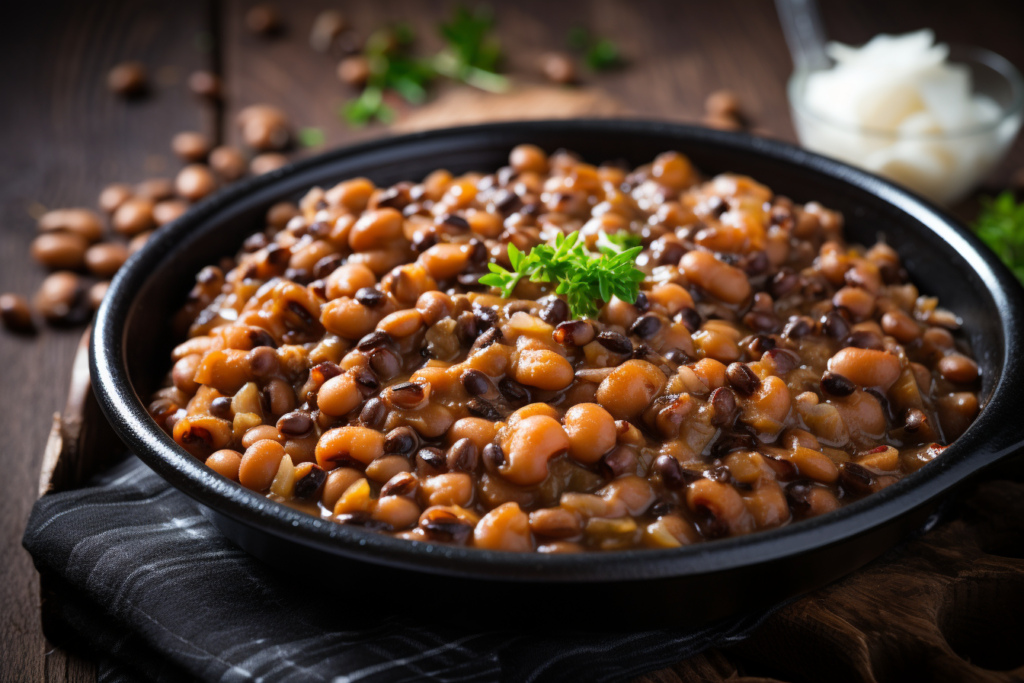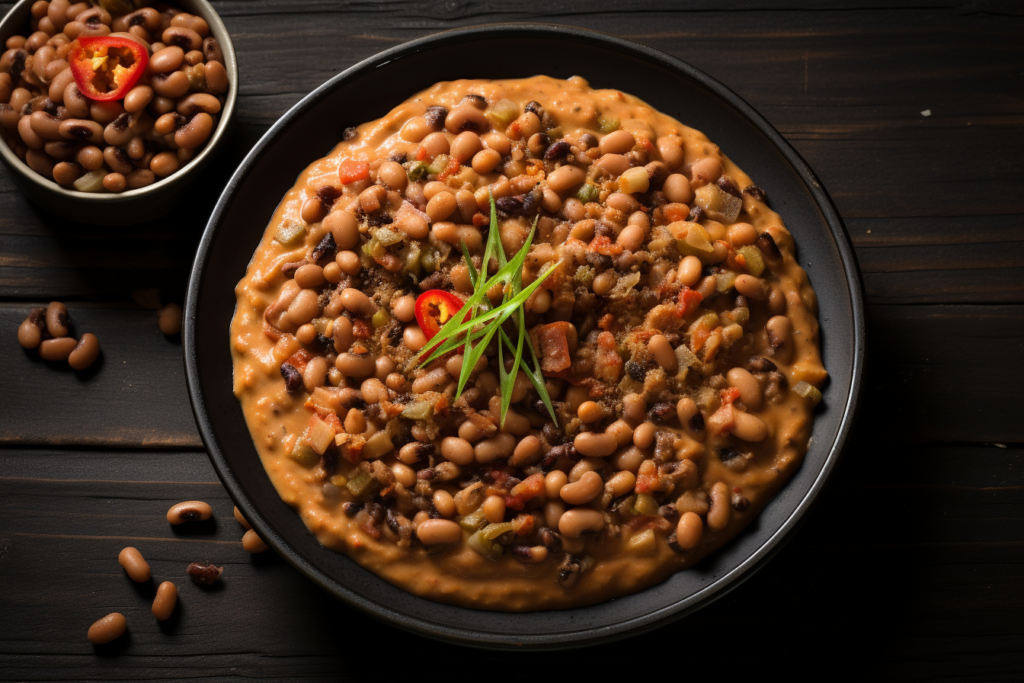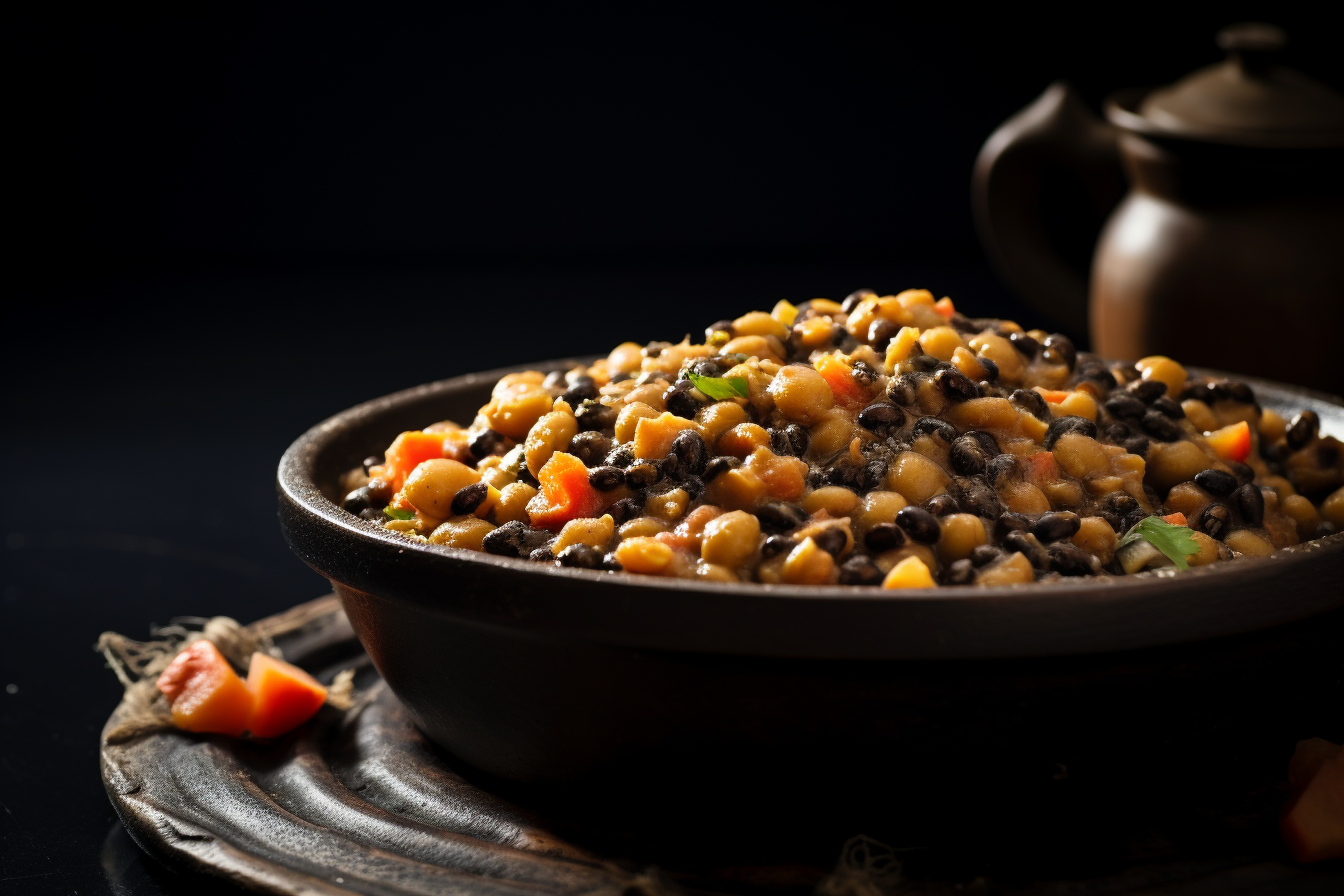Delightfully versatile and packed with nutrition, frozen black-eyed peas serve as the star ingredient in this flavorful and comforting recipe. Perfect for busy days or when fresh produce is scarce, utilizing frozen peas doesn’t compromise taste or quality. These legumes, known for their mild, slightly nutty flavor and creamy texture, offer health benefits, making them a fantastic addition to any meal.
This recipe celebrates the convenience of frozen black-eyed peas. It demonstrates how they can effortlessly transform into a hearty, satisfying dish. When mixed with colorful veggies, flavorful spices, and maybe some savory meat or vegetarian substitutes, this preparation promises a delightful symphony of flavors and textures that will entice both – seasoned black-eyed pea enthusiasts and newcomers alike.
Let’s dive into this simple yet delicious recipe that turns these humble frozen legumes into a culinary delight!
What are Black-Eyed Peas?
Black-eyed peas have long been a mainstay of meals in South Asia and West Africa. Not only are they tasty, but the meal is also nutritious. As a legume, black-eyed peas are a vegetable and also a bean for protein.
Black-eyed peas contain specific nutrients such as zinc, iron, and amino acids typically found in the protein food group. They also contain nutrients of the vegetable food group – fiber, folate, and potassium.
Overview: How To Cook Frozen Black-Eyed Peas?

Make a comforting pot of Black-Eyed Pea Stew according to this simple recipe. The black-eyed peas will be more soft after soaking, so be sure to do that first. In the meantime, puree some tomatoes, onions, and garlic until smooth. This will make a delicious puree.
Prepare for a symphony of tastes by infusing olive oil with the fragrant scent of cumin seeds and a bay leaf in a pressure cooker. Then the rich tomato puree comes in, blending with the peas to create a vivid and intense flavor. Pepperoncini, garlic powder, and thyme give the stew a spicy kick and a wonderful depth of flavor. Add a little salt and pepper and set the pressure cooker to high heat.
Black-Eyed Pea Stew, a reassuring dish, is the climax of a flavorful ballet that begins with a single whistle. Enjoy the comforting warmth of this well-prepared dish when it is served hot and relish in the healthy goodness of a home-cooked dinner. Loving this you can also try our Southern Red Beans.
Fantastic Frozen Black-Eyed Pea Feast!
Equipment
- Measurement cups and spoons
- Garlic mincer
- Knife and chopping board
- Blender (Hand or Electric)
- Serving spoon
- Pressure cooker
Ingredients
- 1 pound dry black-eyed peas
- 2 tablespoons olive oil
- 1 large onion sliced
- 4 cloves garlic minced
- 8 cups water
- 1 diced tomatoes
- 5 pepperoncini peppers
- 1 bay leaf
- ½ teaspoon garlic powder
- ¼ teaspoon ground thyme
- 1 teaspoon cumin seeds
- salt and pepper to taste
Instructions
- Place black-eyed peas into a large container and cover with several inches of cool water; let soak at room temperature – for 8 hours to overnight. Drain and rinse; set aside.
- Blend onion, tomatoes, and garlic cloves using a blender to make a thick tomato puree.
- Heat olive oil in a pressure cooker over medium heat. Add cumin seeds and bay leaf and stir until it gives an aromatic fragrance.
- Pour tomato puree and stir until dried. Then, add soaked black-eyed peas, pepperoncini, garlic powder, thyme, salt, and pepper.
- Add water and close the lid of the pressure cooker.
- After one whistle, simmer the heat for 10 minutes. Then turn off the heat.
- Serve hot.
Notes
- For a milder flavor, use chicken or vegetable broth.
- For a richer flavor, use beef.
- Incorporating acidic elements like a splash of citrus juice (lemon or lime) or a touch of vinegar (balsamic, apple cider, or red wine vinegar) can brighten and balance the flavors in your black-eyed pea dish. The acidity adds a refreshing tang that enhances the overall taste profile.
Nutrition
Nutritional Value (Per Serving)
- Calories: 307 kcal
- Total Fat: 13g
- Carbohydrates: 28g
- Protein: 18g
Pea-fiction Unveiled: Frozen vs. Fresh Showdown!
Peas, whether frozen or fresh, bring vibrant flavors to your table. Discover the tale of convenience and freshness in this showdown!
| Texture: Fresh black-eyed peas have a firmer texture compared to their frozen counterparts. They are plump and have a slightly crunchy texture when cooked. | Convenience: Frozen black-eyed peas are readily available year-round, offering convenience as they are prepped and ready to cook. They save time on shelling, cleaning, and preparation. |
| Availability: Fresh black-eyed peas are available during their specific growing season, usually in late spring and summer, and might be more challenging to find at other times. | Texture: Frozen black-eyed peas tend to be softer in texture compared to fresh ones, as the freezing process can slightly alter their consistency. |
| Flavor: Some argue that fresh black-eyed peas have a slightly sweeter and more vibrant taste compared to their frozen counterparts. However, this can vary based on the freshness and quality of the produce. | Storage: They have a longer shelf life and can be stored in the freezer for an extended period, making them convenient for planning meals in advance. |
What to Serve with Frozen Black-Eyed Peas Recipe?

Managing Leftovers!
- Leftovers: Once the peas have cooled down, I like to pack them into a tight-sealed container or bag, keeping them fresh for about five days in the fridge or up to three months in the freezer. When I’m ready to enjoy them again, I take them out of the freezer the night before and let them thaw in the fridge.
- Reheat: When it’s time to heat them up, I simply toss them back into a pot over medium heat until they’re warmed through. If they seem a bit thick, I might add a splash of water or broth to loosen things up. It’s such an easy way to have a tasty meal ready to go, whether it’s a quick weekday lunch or a cozy dinner on a chilly evening. The best part? I get to enjoy the deliciousness of my homemade peas without the fuss every time I reheat them!
Frequently Asked Questions (FAQs)
Q:1 How do black-eyed peas contribute to a balanced diet?
A. These legumes serve a dual purpose as both a vegetable and a protein source, providing essential nutrients like zinc, iron, amino acids, fiber, folate, and potassium.
Q:2 What makes black-eyed peas a significant part of South Asian and West African meals?
A. Black-eyed peas have been a longstanding element in South Asian and West African cuisines due to their delightful taste and nutritional richness.
Q:3 Which option is considered preferable: frozen black-eyed peas or fresh black-eyed peas?
A. Considering convenience and availability, frozen black-eyed peas are often the preferred choice as they are convenient, available year-round, and eliminate the effort of shelling and preparation.
However, if you prioritize taste and texture and have access to fresh peas during their season, they might be the preferable choice for superior flavor and texture. Ultimately, the “better” choice depends on your preference, time constraints, and availability.


Vincent
Wednesday 10th of July 2024
Great for a quick weeknight dinner
Randy
Wednesday 10th of July 2024
Perfect for meal prep.
Alan
Wednesday 10th of July 2024
Comfort food at its best.